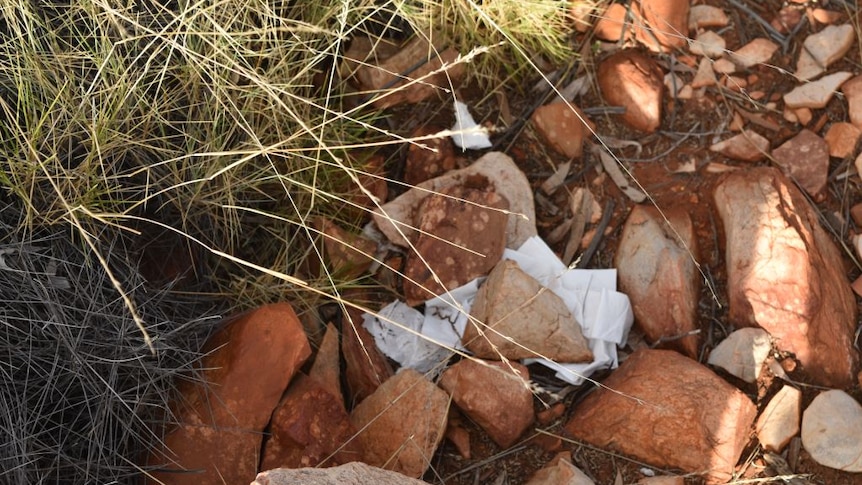The Larapinta Trail near Alice Springs is renowned for its spectacular views and scenery, but its increasing popularity among bushwalkers this year is generating a less impressive sight — deposits of toilet paper.
Key points:
- NT Parks and Wildlife says this year’s season is one of the busiest ever
- There are 16 toilets along the 230km trail, but still mounds of toilet paper are seen at some of the highest points
- Rangers and seasoned walks urge people to bury their waste appropriately
According to Northern Territory Parks and Wildlife, 2022 is shaping up to be the busiest season for the 230-kilometre trail in the heart of the West MacDonnell National Park.
“In the first two weeks of July the numbers of independent walkers, not including those on commercial tours, averaged at just over 300 people per night,” NT Parks and Wildlife operations director Chris Day said.
But experienced Victorian hiker Michelle Forrer said the amount of toilet paper she saw scattered across the trail during July was disconcerting.
“This was definitely the biggest downside to my experience on the trail and I was wondering what could be done about it,” she said.
“Some of it may have been dug up by animals but a lot of it looked discarded.”
Ms Forrer said the trail was very busy at the time with “hundreds of people along the track.”
“For many, it was their first hike,” she said.
She said education was the key to reducing human impact on the trails.
“A month before I walked the Larapinta, I had walked the Australian Alpine Walking Track,” Ms Forrer said.
“[There was] not a trace of paper to be seen out there but numbers are fewer and it’s not popular with beginner hikers.”
Leave no trace
Mr Day said evidence of human waste on the trail had been a problem for many years but it typically became more apparent as the tourism season wore on.
“One of the things that we’ve noticed is there’s probably a slightly different market on the trail this year,” he said.
“There’s probably a lot of people who are not what you call seasoned bushwalkers.”
Mr Day said these visitors might not be aware of a key bushwalking principle, which is to leave no trace.
He said there were 16 toilets along the track and he encouraged hikers to plan ahead and use the facilities.
“But where you get caught short and there is no toilet, the recommendation is to get at least 100 meters away from the trail, the campsite, any waterhole or watercourse, and dig a shallow hole and bury [the waste and the toilet paper] properly,” he said.
Mr Day said another key principle was to be considerate of the park’s hosts, such as its traditional owners and the staff who look after the trail, as well as other visitors.
FIFO toilets
NT Parks and Wildlife is in the early design stages of installing toilets on some of the higher sections of the Larapinta trail, with location approvals by traditional owners and funding yet to be secured.
Mr Day said a big challenge was vehicle access to higher campsites, with one solution to use a helicopter.
“It’s a problem of not only getting in and building infrastructure in those locations, but then the ongoing servicing,” he said.
Mr Day said using a helicopter to fly out waste would not be cheap, with hire costs amounting to $1,500 per hour.
“Realistically, to service Mt Sonder, it’s over an hour flight,” he said.
With the toilets likely to be several years away, Mr Day said it was vital that bushwalkers did the right thing so that nature could take its course.
He said it was fortunate that the Larapinta Trail had time to recover over the hot summer months, which gave human waste time to biodegrade naturally.
“Particularly if people are doing the right thing and digging their cat hole away from the trail, it will break down quite rapidly,” Mr Day said.
.
